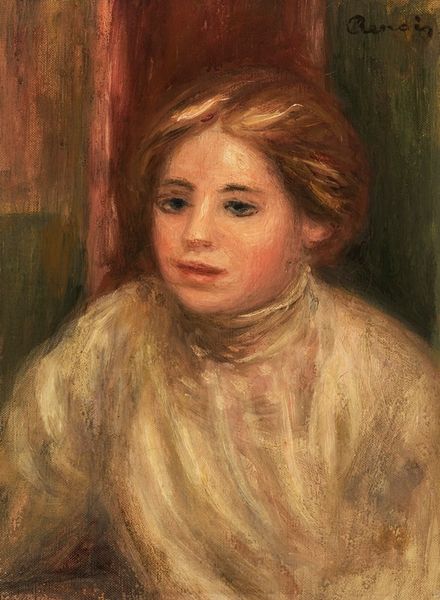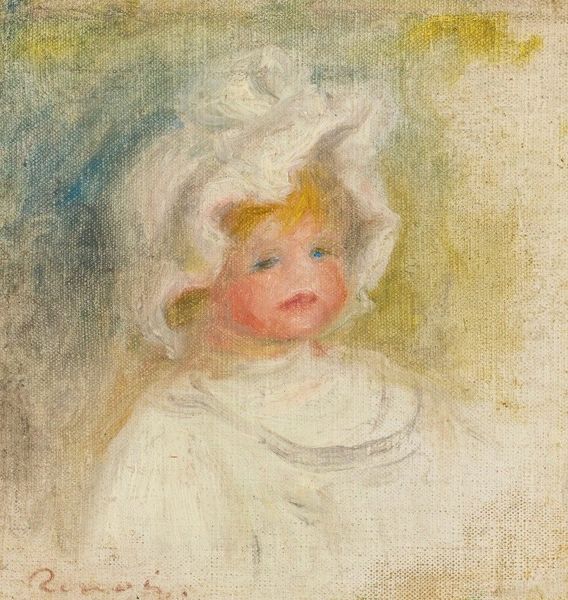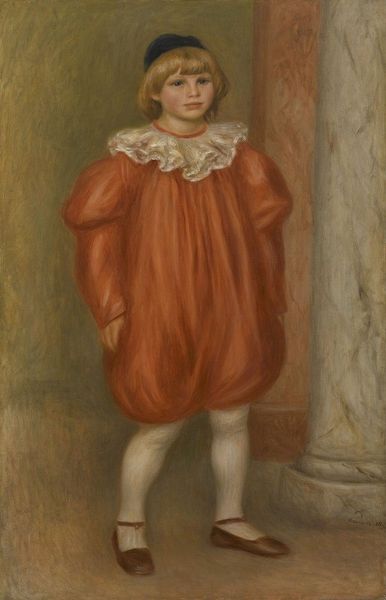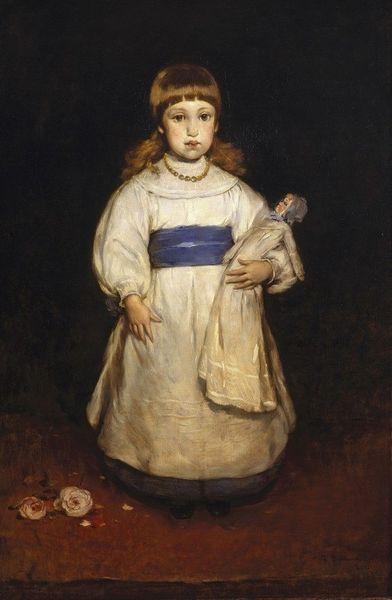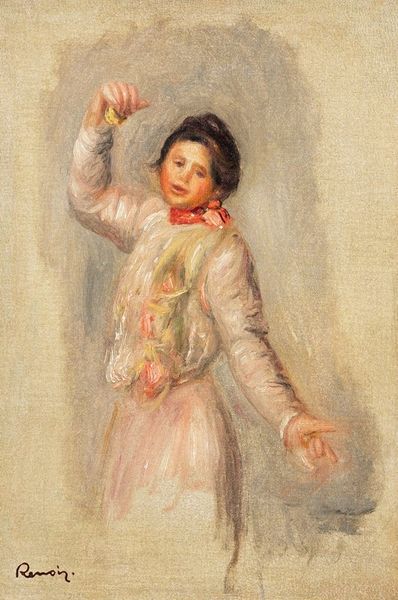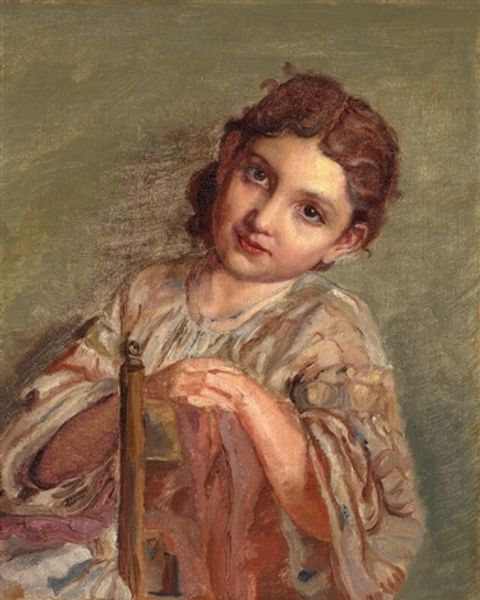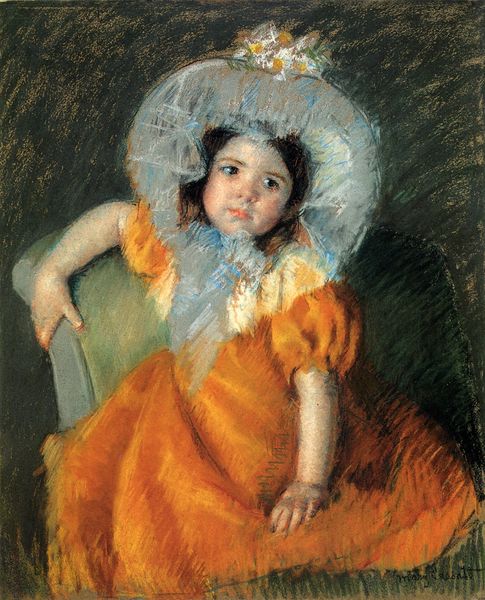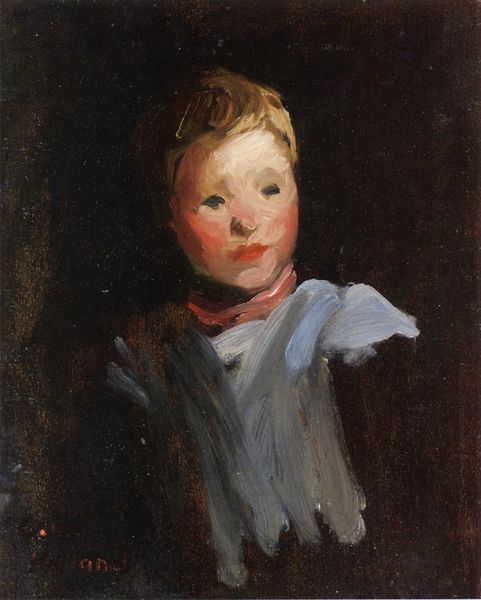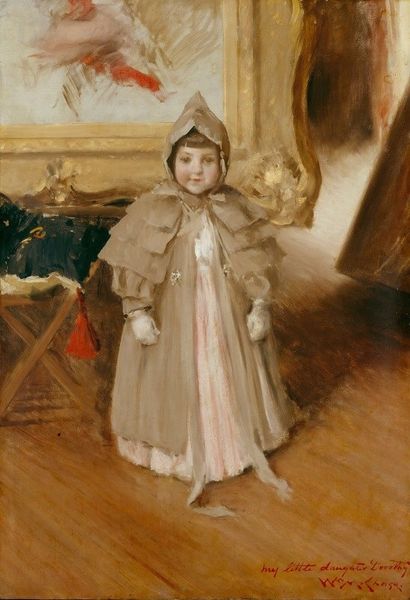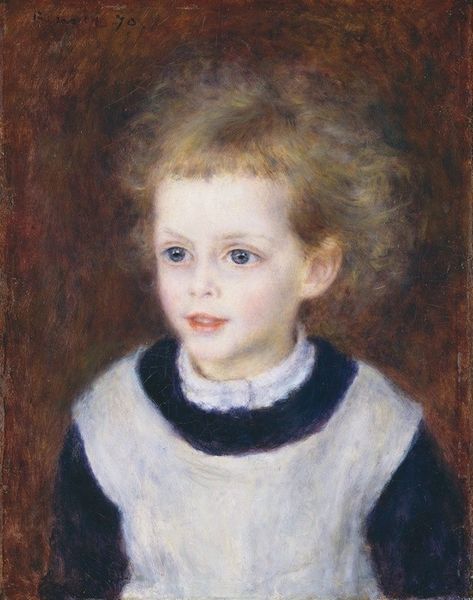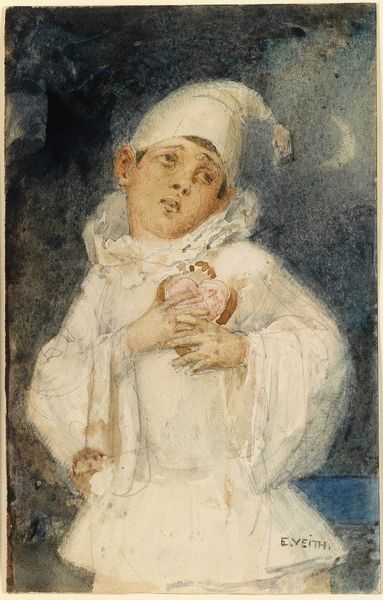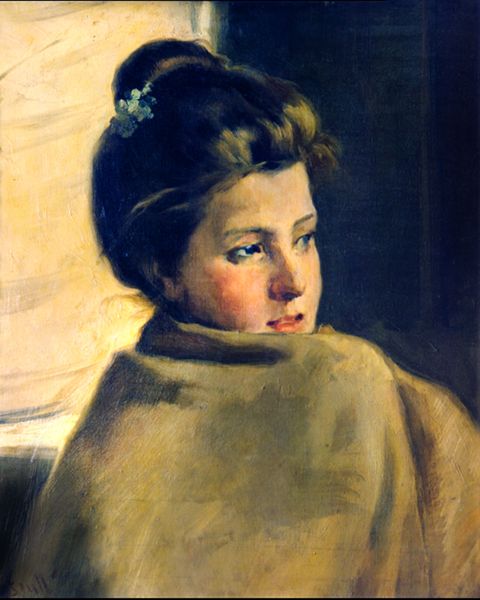
Copyright: Public Domain: Artvee
Editor: Here we have Pierre-Auguste Renoir's "The White Pierrot," painted in oil sometime between 1901 and 1902. I’m struck by the composition. It feels quite classical despite being Impressionistic. What do you see in this piece, particularly regarding its formal construction? Curator: The success of this painting lies in its orchestration of light and texture. Note how Renoir utilizes the impasto technique to build a surface that is both tactile and luminous. The contrast between the velvety collar and the smoother face, achieved through varied brushstrokes, is remarkable. It directs our gaze, wouldn't you agree? Editor: I see that now. The textures create an interesting contrast, even just between the ruff and the costume fabric. Curator: Precisely. Further, consider the interplay of white on white. The subtle variations in tone and shade across the Pierrot’s costume demonstrate Renoir’s mastery of color. The figure's pose also subtly subverts the flattened picture plane. How would you say the asymmetry plays a role in your understanding? Editor: I see it... By offsetting the figure, Renoir makes a compelling compositional choice, drawing the viewer into the subject. And the colour brings it to life despite its pale cast. I find this a successful piece, the color more nuanced than I first thought. Curator: Yes, through these delicate arrangements of form and colour Renoir allows us access to something special: the ability of painting to elicit a complex aesthetic emotion. Editor: It makes you realize how much thought and experimentation goes into colour alone. I have much to ponder.
Comments
No comments
Be the first to comment and join the conversation on the ultimate creative platform.
